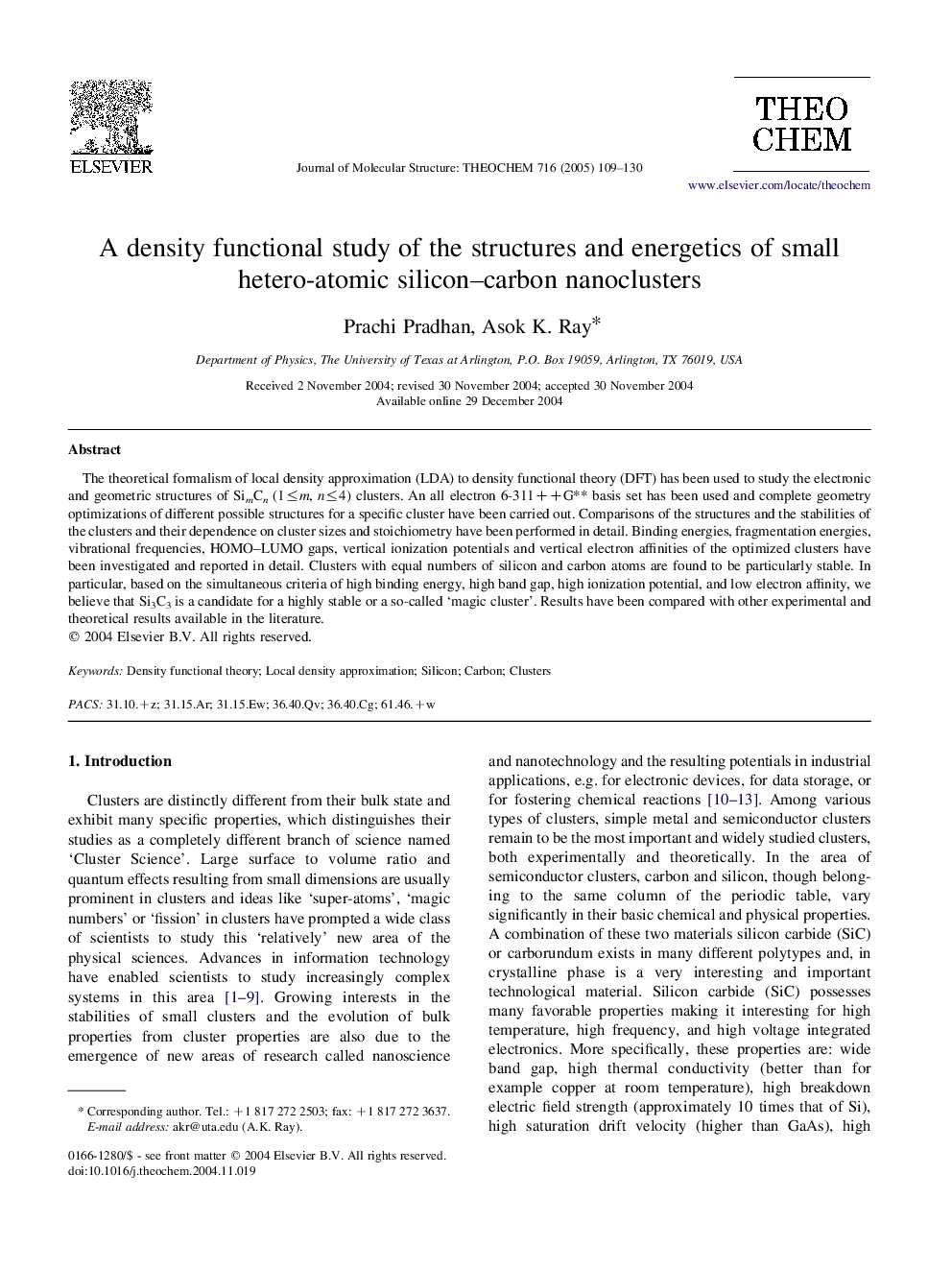| Article ID | Journal | Published Year | Pages | File Type |
|---|---|---|---|---|
| 9591783 | Journal of Molecular Structure: THEOCHEM | 2005 | 22 Pages |
Abstract
The theoretical formalism of local density approximation (LDA) to density functional theory (DFT) has been used to study the electronic and geometric structures of SimCn (1â¤m, nâ¤4) clusters. An all electron 6-311++G** basis set has been used and complete geometry optimizations of different possible structures for a specific cluster have been carried out. Comparisons of the structures and the stabilities of the clusters and their dependence on cluster sizes and stoichiometry have been performed in detail. Binding energies, fragmentation energies, vibrational frequencies, HOMO-LUMO gaps, vertical ionization potentials and vertical electron affinities of the optimized clusters have been investigated and reported in detail. Clusters with equal numbers of silicon and carbon atoms are found to be particularly stable. In particular, based on the simultaneous criteria of high binding energy, high band gap, high ionization potential, and low electron affinity, we believe that Si3C3 is a candidate for a highly stable or a so-called 'magic cluster'. Results have been compared with other experimental and theoretical results available in the literature.
Keywords
Related Topics
Physical Sciences and Engineering
Chemistry
Physical and Theoretical Chemistry
Authors
Prachi Pradhan, Asok K. Ray,
